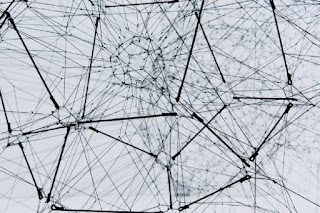Virtual reality headsets transport users to immersive digital worlds, enhancing gaming and training experiences
Virtual reality headsets transport users to immersive digital worlds, enhancing gaming and training experiences
Virtual reality (VR) headsets have emerged as a
groundbreaking technology that transports users to immersive digital worlds,
profoundly enhancing gaming and training experiences. These devices offer a
level of absorption and interactivity that was once the stuff of science
fiction, and they have quickly found applications beyond entertainment,
including in education, healthcare, and professional training. In this 800-word
essay, we will explore how VR headsets are revolutionizing the way we
experience gaming and training.
Gaming in a New Dimension:
VR gaming takes gaming experiences to an entirely new
dimension. Traditional video games are limited to a two-dimensional screen, but
VR headsets immerse players in a three-dimensional, interactive world. Players
don a VR headset and often use motion managers to interact with the virtual
environment, making it feel like they are physically present in the game world.
The sense of presence in VR gaming is one of its most
remarkable aspects. Gamers can explore fantasy realms, engage in epic battles,
or solve puzzles as if they were inside the game itself. The level of immersion
is such that players can feel genuine fear, excitement, and exhilaration,
creating an unparalleled level of engagement.
Training and Simulation:
Beyond gaming, VR headsets are transforming training and
simulation across various industries. They provide a safe and cost-effective
way to prepare individuals for real-world scenarios, making them invaluable
tools for education and professional development.
1. Education:
In the field of education, VR headsets are revolutionizing
the way students learn. Virtual field trips allow students to explore
historical sites, travel through space, or witness natural phenomena, bringing
lessons to life in ways that textbooks cannot. Complex scientific concepts can
be visualized, making learning more engaging and understandable.
2. Healthcare:
In healthcare, VR is used for medical training, allowing
aspiring surgeons to practice procedures in a risk-free virtual environment
before operating on real patients. VR is also being used for pain management
and therapy, providing immersive experiences that distract patients from pain
or help them confront and overcome phobias and traumas.
3. Aviation and Military:
The aviation and military sectors have long relied on flight
simulators, and VR has taken these simulations to the next level. Pilots and
soldiers can train in highly realistic virtual environments, honing their
skills without the risks associated with live exercises.
4. Architecture and Design:
Architects and designers use VR to create and explore 3D
models of buildings and spaces. Clients and stakeholders can "walk
through" a virtual building before construction begins, providing a more
accurate sense of the final product and allowing for design adjustments early
in the process.
5. Manufacturing and Industry:
In manufacturing and industry, VR is used for training
employees to operate complex machinery and perform maintenance tasks. It
reduces the risk of accidents and errors while improving efficiency and
productivity.
Accessibility and Inclusivity:
VR also has the potential to make experiences more
accessible and inclusive. For individuals with disabilities or those who cannot
easily travel, VR can provide opportunities for participation and exploration.
It's being used to create adaptive and customized experiences that cater to
various needs.
Challenges and Future Directions:
While VR headsets offer exciting possibilities, they also
come with challenges. Cost remains a barrier to widespread adoption, although
prices have been gradually decreasing. VR hardware must become more affordable
to reach a broader audience.
Content creation for VR can be resource-intensive, requiring
specialized skills and equipment. Developers must find ways to make VR content
more accessible and user-friendly.
Moreover, VR can induce motion sickness in some users, and
prolonged use can lead to discomfort. Innovations in hardware and software are
continually addressing these issues to improve the overall user experience.
In the future, we can expect VR earpieces to become even
more sophisticated. Advances in display technology, haptic feedback systems,
and motion tracking will make VR experiences even more immersive and realistic.
The development of wireless, standalone VR headsets will enhance portability
and ease of use.
Additionally, the integration of artificial intelligence and
appliance learning will enable more dynamic and responsive virtual
environments. VR applications may extend beyond gaming and training to areas
like telecommuting, social interaction, and therapy.
In conclusion, VR headsets are revolutionizing the way we
experience gaming and training. They offer unparalleled immersion, making
gamers feel like they are inside the game world, and they provide safe and
effective training experiences across various industries. While there are
challenges to overcome, the future of VR holds great promise, with advancements
in technology and content creation poised to make VR even more accessible and
transformative. Whether it's exploring fantastical realms in a video game or
mastering complex skills in a simulated environment, VR headsets are reshaping
our understanding of what's possible in the world of digital experiences.




Comments
Post a Comment